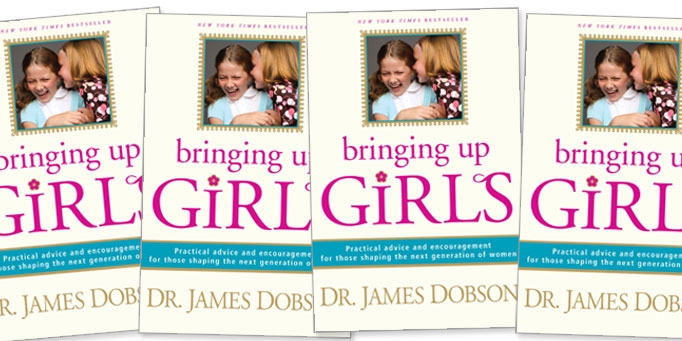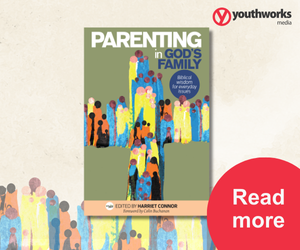
Book Review: Bringing Up Girls
According to Dobson, bringing up a girl today is a big challenge.
Bringing Up Girls by James Dobson
I can still remember the day my little girl was born six weeks early. She weighed just under 1.5 kg and was sent straight to Intensive Care. Six long weeks later, she came home. We took photos out the front of our house and celebrated the arrival of our little Issy, home at last. Around this time I realised, in a new and different way, that I now had a daughter and with this, came a great responsibility.
According to Dobson, bringing up a girl today is a big challenge. He begins by saying, ‘… many girls are being victimized by cultural influences that are more violent, hyper-sexualized, and spiritually impoverished’ and if that is not enough, ‘… our society is at war with good parents who are trying desperately to protect their kids from the harmful forces swirling around them’ (p.8).
How should we react as Christian parents to this ‘attack’ on our girls?
Here are some of Dobson’s great insights:
If you are a dad...
Remember, you mean the world to your girl(s) and she has a place in her soul ‘reserved for Daddy (or a Daddy figure)’ (p.87). If you reject or ignore her, this ‘becomes more intense, though it is often tainted with resentment and anger’ (p.88). This also ties in with the reasons why girls and women have such intense needs of affirmation. ‘Your daughter’s sense of self-worth and confidence is linked directly to her relationship with Dad’ (p.88). In the end, Dobson argues ‘... this affects her femininity and teaches her how to relate to boys and men’ (p.88). This is something we all want to help our daughters with, right?!
If you are a mum...
One of the main points that Dobson urges all mothers to consider is staying home for at least one year after the birth of their child (though preferably for three). ‘If at all possible, I would recommend that moms [sic] take at least a year after birth to heal, bond, and establish a family routine’ (p.65). Both he and I know that this may not be practical for all families. Alongside this, he urges all mums (with the help of Dad) to lead their children and not ‘try and be friends’ with them. Given that ‘attachment’ is a key concept for a small child, ‘…this objective is achieved by expressing genuine love, affection, and dedication, combined with reasonable discipline, defined limit and firm leadership’ (p.70). As a trained teacher, Dobson is right on the mark when he says, ‘[A]ffection and discipline counterbalance each other, leading to greater bonding’ (p.70).
Are princesses cool?
Little girls seem to love the idea of being a ‘princess’. Why are girls taken with the princess fantasy? Is it a good thing? Dobson argues that the princess movement is positive in that it ‘helps to counter some of the degrading stuff thrown at girls’ (p.119). Dobson argues that it gives expression to their ‘inner yearning to love and be loved and to live ‘happily ever after’’. It helps girls to feel valued for who they are, therefore ‘creating a safe haven’ for them. And most importantly, it models virtue for our daughters. Dobson suggests that, ‘in a subtle way, the Disney stories present a wholesome image of virginity until marriage and then lifelong love thereafter… they also promote femininity, kindness, courtesy, the work ethic [and] service to others’ (p.120). These are all great things to bring into our daughters' lives and are a much better alternative to Barbie and Brats!
In contrast to Dobson’s view on the princess phenomenon, others have argued that this image taps into our culture’s emphasis on self-interest, vanity and the desire to be pampered – a not-so-great message to bring into our daughters’ lives! (Youthworks College faculty member, Kerrie Newmarch has explored the princess theme in more detail in an article for The Briefing, entitled ‘Look at me! I’m a princess! Ed.). It’s also worth remembering that the Disney Princesses can also promote a lot of other values that are a long way from the gospel of grace.
Overall, I found the book to be a great read. It was very informative and thoroughly researched, whilst also being a relatively easy read. Dobson also addresses a number of other topics, including female brain development (and the relationship between emotions and communication), some brilliant ideas to help Dads connect in special ways with their daughters and a great Q&A section on puberty and adolescent development. I will definitely be buying my daughter a charm bracelet in the near future (see Chapter 17!)
To finish, these words are worth quoting:
I urge all parents, but especially fathers, to work at building your daughter’s self concept throughout her childhood. Tell her she is pretty every chance you get. Hug her. Compliment her admirable traits. Build her confidence by giving her your time and attention. Defend her when she is struggling. And let her know that she has a place in your heart that is reserved only for her. She will never forget it. (p.21)
James C. Dobson, Bringing Up Girls: Practical Advice and Encouragement for Those Shaping the Next Generation of Women, Tyndale House Publishing, 2010.
For more articles from Growing Faith, subscribe to our monthly e-newsletter.
To hear about the latest books and resources from Youthworks Media, subscribe here.







